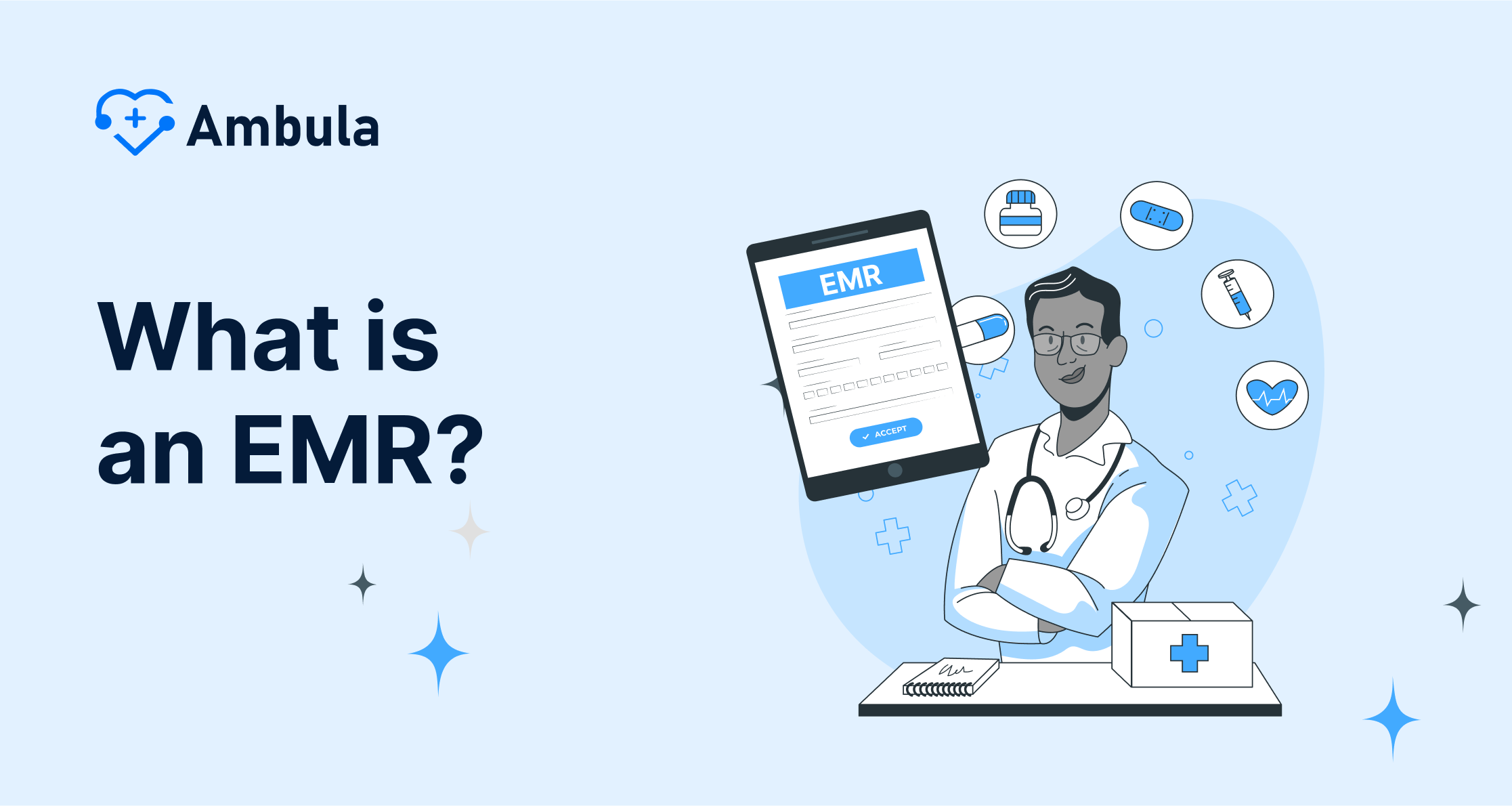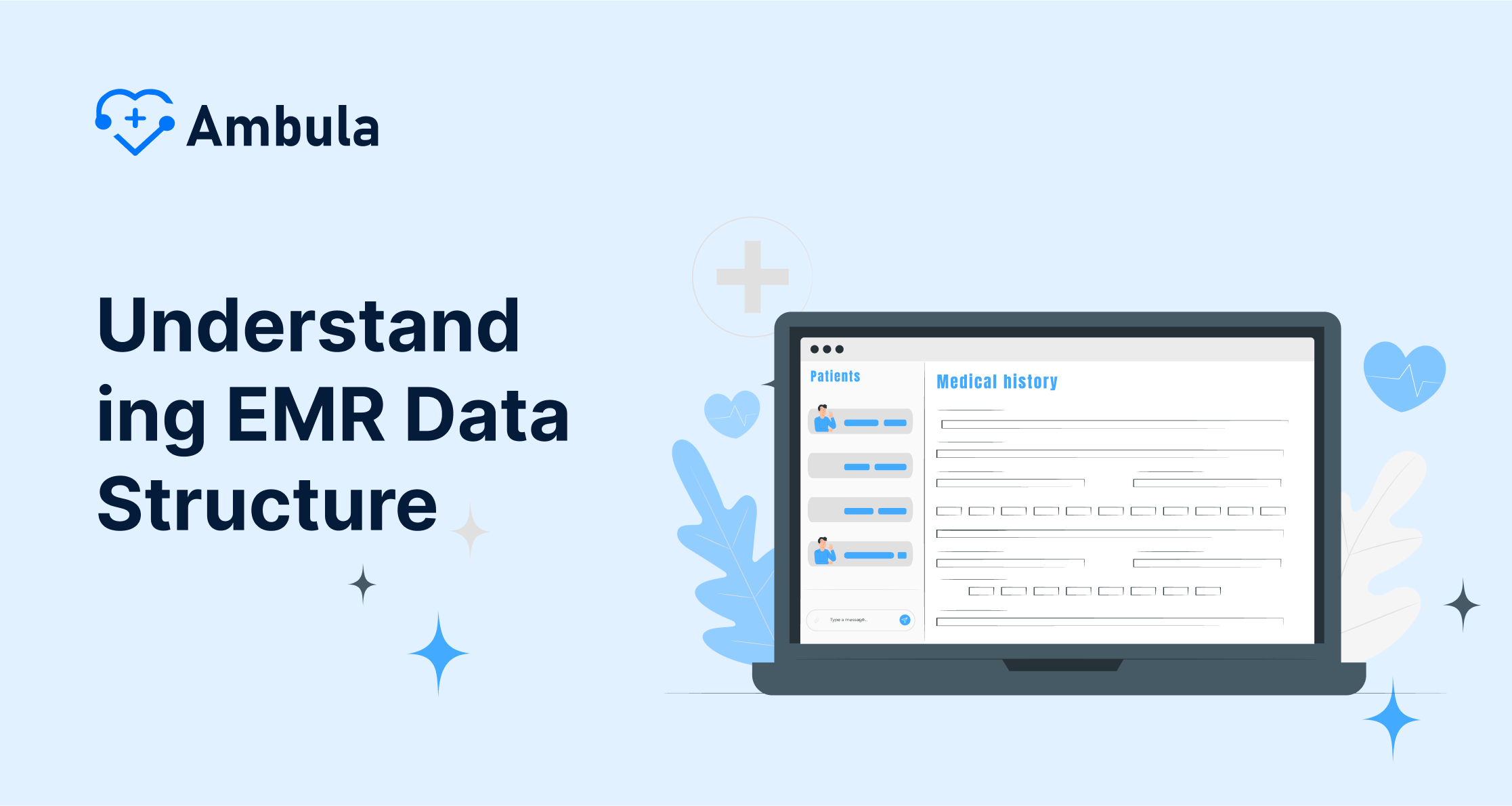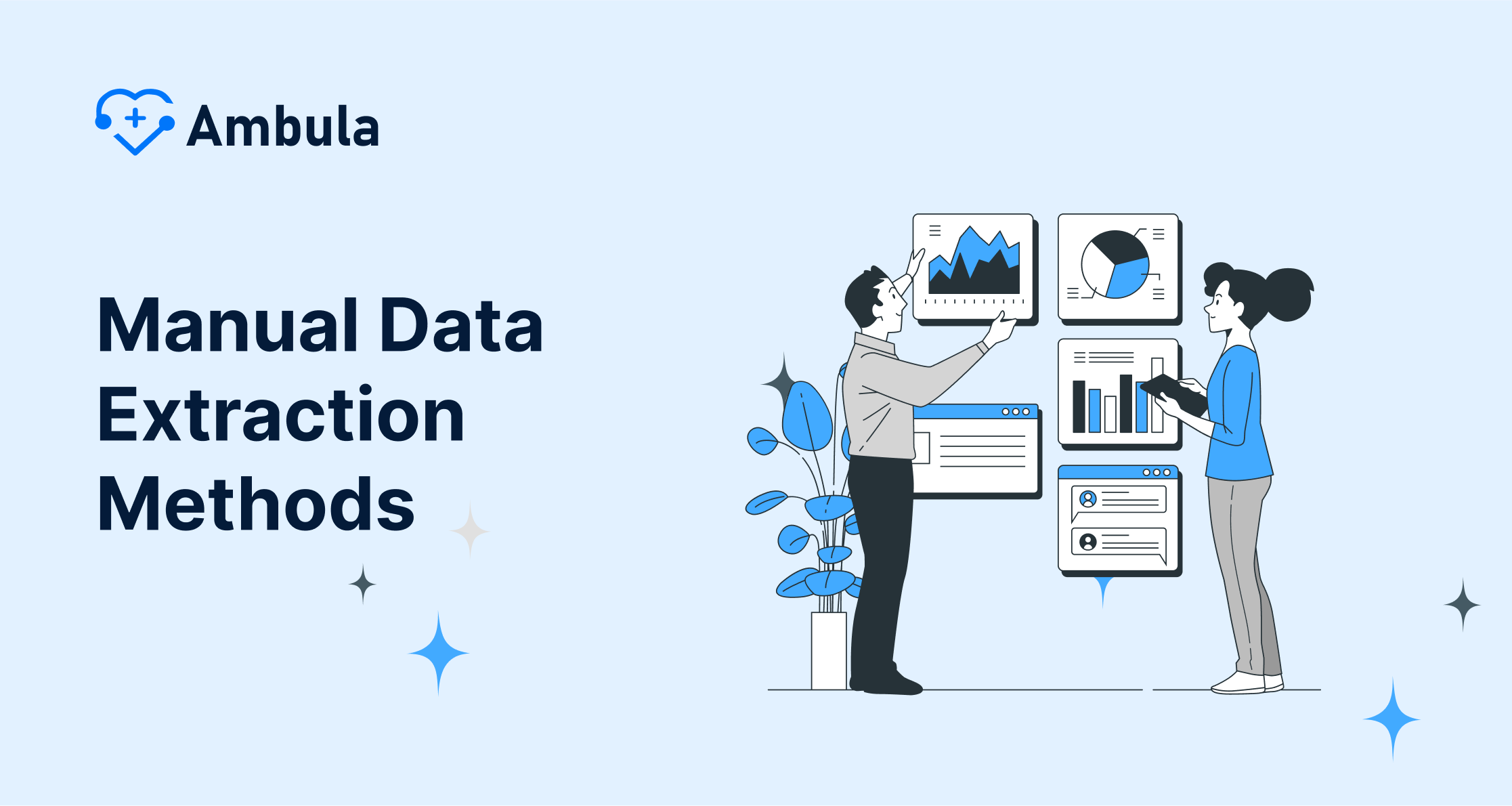How to extract data from EMR?
Extracting data from EMR might be a complex task if you’re unaware of all the options available. Normally, EMRs sometimes contain a mixture of structured and unstructured data.
While most EMR data extraction activities require pulling out data from structured elements, a significant volume of unstructured data must be highlighted. In this blog post, we will show you how to extract data from EMR in the easiest ways. Read on!
What is an EMR?
Before we answer your question about how to extract data from an EMR, it’s evident to define an EMR in the first place. Electronic medical records are mainly digital versions of paper charts in clinicians’ offices, clinics, and hospitals. EMRs contain notes and information collected by and for the clinicians in that office, clinic, or hospital and are mostly used by providers for diagnosis and treatment.
On the same note, you might be lost regarding the difference between EHR and EMR. Click on the following link for everything you want to know.
Check out these articles after you’re done
- Important of structured data using EMR system
- The benefits of using natural language processing in healthcare
- What is advancing care information

Understanding EMR Data Structure
Understanding the structure of Electronic Medical Records (EMR) is crucial for healthcare providers, informaticians, and data analysts because it plays a key role in the efficient delivery of health services and in healthcare research. A well-structured EMR system can improve patient care, streamline workflow, enhance data accuracy, and facilitate compliance with legal and regulatory requirements. Below is an explanation of the main components and organization of EMR data structure.
- Patient Demographics: EMR systems start with patient demographics, which include basic information such as name, date of birth, gender, race, ethnicity, contact details, insurance information, and other identifiers. This section is critical for patient identification and is the foundation upon which clinical data is associated.
- Clinical Documentation: This includes a comprehensive digital record of a patient’s clinical encounters, treatments, and care history. It can be structured as progress notes, treatment plans, medical histories, surgical reports, discharge summaries, and medication orders. Clinical documentation is often template-driven to ensure that essential data points are consistently captured.
- Medication Information: Medications are a central part of most patient encounters. EMRs need to track both prescribed and over-the-counter medications, dosages, administration instructions, allergies, and adverse reactions. This supports medication reconciliation prescription management and ensures safe prescribing practices.
- Diagnostic Data: Diagnostic information such as laboratory test results, radiology reports, and other investigative data are captured in structured formats within the EMR. Integration with laboratory and radiology information systems is often essential to streamline the flow of this information.
- Coding and Billing Information: For healthcare providers to be reimbursed by insurance companies or government programs like Medicare and Medicaid, accurate coding of diagnoses and procedures is necessary. EMR systems are typically integrated with Current Procedural Terminology (CPT) codes, International Classification of Diseases (ICD) codes, and other billing-related data. This aspect of EMR structures must be handled with precision to maintain compliance and ensure proper revenue cycle management.
- Clinical Decision Support: Decision support tools are sometimes integrated into the EMR to aid clinicians in making evidence-based decisions. This can include prompts for preventative measures, alerts for potential drug interactions, and guidelines for managing specific conditions. These tools rely on structured and well-organized data to function correctly.
- Security and Privacy Features: Given the sensitive nature of health information, EMR data structures must include robust security and privacy features to ensure compliance with regulations such as the Health Insurance Portability and Accountability Act (HIPAA) in the United States. Access controls, encryption, and audit trails are part of the data structure that protects patient information.
Manual Data Extraction Methods
Manual data extraction methods from electronic medical records (EMR) involve human interaction to transfer relevant information from EMR systems into other formats, often for purposes such as data analysis, reporting, or migration to other systems. Here’s an explanation of various manual data extraction methods applied to EMR:
Transcription or Data Entry
Healthcare staff or data entry professionals read or print out patient records from the EMR and manually transcribe or input pertinent information into a different database, spreadsheet, or documentation. This method is useful when moving data to non-interoperable systems, creating custom reports, or compiling specific datasets for research or audits.
Copy-Paste Technique
For smaller-scale extractions, individuals may perform simple copy-and-paste actions from the EMR into other applications. This approach is usually utilized when specific portions of the EMR, such as patient notes or lab results, need to be collated for further use or examination.
Document Scanning and OCR
When working with EMRs that still contain scanned documents or images (e.g., PDFs or image files of handwritten notes), manual extraction might involve scanning these documents and applying Optical Character Recognition (OCR) technology to convert the images into editable text. While OCR automates part of the process, it often needs human oversight to correct OCR errors and ensure data fidelity.
Automated Data Extraction Methods
Automated data extraction methods leverage technology to identify, collect, and process data from various sources, minimizing human intervention and increasing efficiency. These methods are particularly beneficial for handling large volumes of data where manual extraction would be impractical. Here’s an exploration of some common automated data extraction techniques:
Optical Character Recognition (OCR)
OCR technology is used to convert different types of documents, such as scanned paper documents, PDF files or images captured by a digital camera into editable and searchable data. Advanced OCR systems can accurately recognize characters and formatting features, making them highly efficient for digitizing printed text so that it can be electronically edited, searched, and stored more compactly.
Web Scraping
Web scraping tools are designed to systematically browse the web and extract data from websites. They can navigate through web pages, identify the relevant data based on predefined criteria, and then collect it into structured datasets. This is valuable for aggregating information from online sources, such as product listings, prices, contact information, or any publicly accessible web content.
Data Mining and Text Analytics
Data mining software is used to discover patterns, correlations, and trends within large data sets. These tools can analyze texts to extract specific information, such as key phrases, entity names, or relationships. Text analytics can involve sentiment analysis, topic categorization, and other complex operations.
Extraction using APIs (Application Programming Interfaces)
Many modern software solutions and databases provide APIs that allow for the automated fetching of data. An API defines a set of rules that programmers must follow to interact with a software application, enabling the retrieval and manipulation of data without needing to access the software’s underlying source code directly.
ETL (Extract, Transform, Load) Processes
ETL tools are used in data warehousing to extract data from heterogeneous data sources. Once extracted, the data is transformed into a structured format and loaded into a target database or data warehouse. These processes are often run on a schedule and can handle enormous amounts of data efficiently.
Document Parsing and Classification
For structured documents like forms or invoices, automated parsing software can recognize and extract specific information based on the document’s layout and semantic content. Advanced systems use machine learning to improve accuracy over time as they process more documents.
Natural Language Processing (NLP)
For unstructured text, NLP techniques enable computers to understand human language in a manner that extracts meaningful and relevant data. NLP can automate the extraction of insights from clinical notes, customer feedback, or any text-based data sources by identifying entities, relationships, and sentiments.
Automated data extraction technologies are integral in today’s data-driven world, providing fast, accurate, and cost-effective solutions for transforming raw data into valuable information. They save significant time and resources, reduce errors associated with manual data handling, and allow for real-time data processing and analysis.
Artificial Intelligence tools
Mainly, when it comes to extracting data from EMR, it’s evident that AI tools are best used to extract unstructured data. Researchers have found that overall, structured EMR data did not meet the requirements for regulatory grade criteria, while unstructured data did.
That said, they conclude that using a preprocessor for EMR data extraction helps transform data into a format suitable for established machine learning techniques. Hence, the essence of the framework is to solve problems associated with EHR and EMR data extraction, such as:
- Unstructured data
- Missing values
- Several data types
- Dissimilarities in sampled data
Application programming interface
Speaking of how to extract data from EMR, you should know that investing in APIs will make extracting data easier. Ideally, with APIs, you can extract data from your EMR and transfer it to an archive or send it to another provider. Similarly, patients can access and compile their data from different providers and view them in one place. The data compiled will allow doctors to make effective decisions and recommendations from complete information.
Data Privacy and Security Considerations
Data privacy and security are critical considerations in designing and managing Electronic Medical Records (EMR) systems. Since EMRs contain sensitive personal health information (PHI), they are subject to strict data protection regulations and standards that aim to prevent unauthorized access and data breaches. When considering these aspects in EMR data structure, several key components must be addressed:
- Access Control: Access to EMR data must be tightly controlled to ensure only authorized individuals can view or manipulate sensitive patient information. Role-based access control (RBAC) is a common method where users are granted permissions based on their professional role and the minimum necessary access to perform their job functions. Strong authentication mechanisms, such as multi-factor authentication (MFA), can also add additional layers of security.
- Data Encryption: Encryption transforms data into a coded format that can only be read with the proper decryption key. EMRs should employ encryption at rest (when data is stored on disk) and in transit (when data is transmitted over networks). This protects patient data from being intercepted or accessed in the event of a data breach or other cyber incidents.
- Data Anonymization and De-identification: When data is used for research or other secondary purposes, PHI must be stripped of identifying information. Anonymization and de-identification techniques remove or obscure personal identifiers to prevent the data from being traced back to an individual, thus reducing privacy risks when sharing data with third parties.
- Compliance with Regulations: Healthcare providers must comply with various legal and regulatory frameworks, such as the Health Insurance Portability and Accountability Act (HIPAA) in the United States or the General Data Protection Regulation (GDPR) in the European Union. These regulations specify guidelines for handling PHI and prescribe stringent penalties for non-compliance.
- Data Backup and Recovery: Data privacy and security protocols should include robust backup and recovery strategies to protect data against loss due to hardware failures, disasters, or cyberattacks. Backup data must also be encrypted and stored securely to prevent unauthorized access.
EMR data archiving
EMR data archiving can have a profound impact on the process of extracting data from EMR systems. Its effects can be observed in several ways, mostly contributing to the efficiency, speed, and accuracy of data extraction.
Archiving ensures that only relevant, active data resides in the main EMR system, which can make the extraction process more manageable and quicker. By moving inactive or rarely accessed records to a separate archive, extraction query run times could essentially be sped up, as there would be a smaller dataset to process through. Overall, this enhances the system’s performance by making data extraction more straightforward and less time-consuming.
Data extraction can also benefit from the structured and organized nature of an archive. Archives are often indexed, which makes locating and extracting specific information much faster and more efficient. Moreover, many EMR archiving solutions have robust retrieval functionalities that can quickly locate and extract the desired data based on various criteria, such as patient ID, date of encounter, or type of record.
Finally, choosing the most suitable tool for effective data extraction requires expert help. Hence, our team at Ambula Healthcare is always ready to answer your questions and help you choose the right tool for you! Contact us today at (818) 308-4108. And now paper charting vs electronic charting: which one is better?






